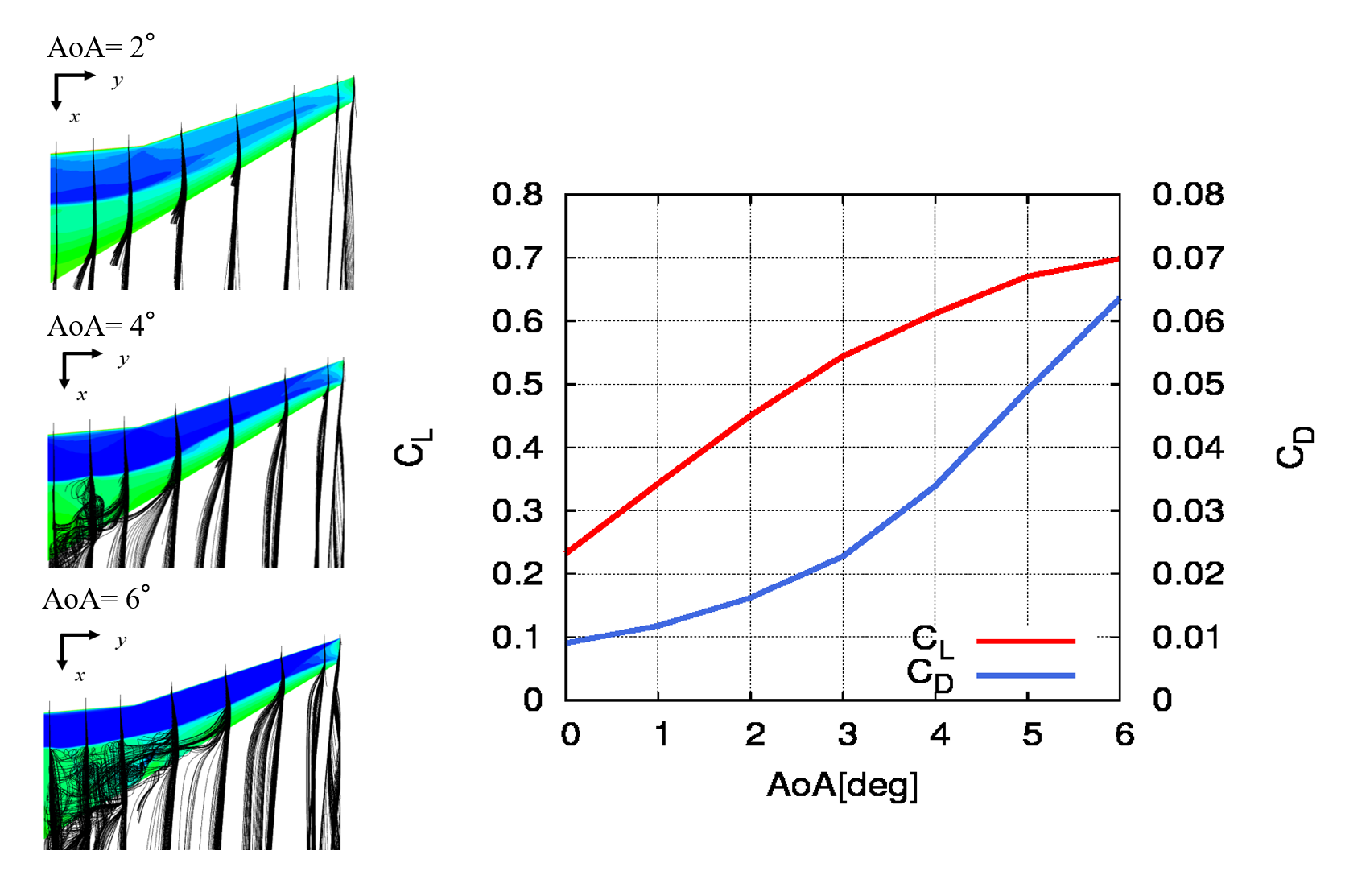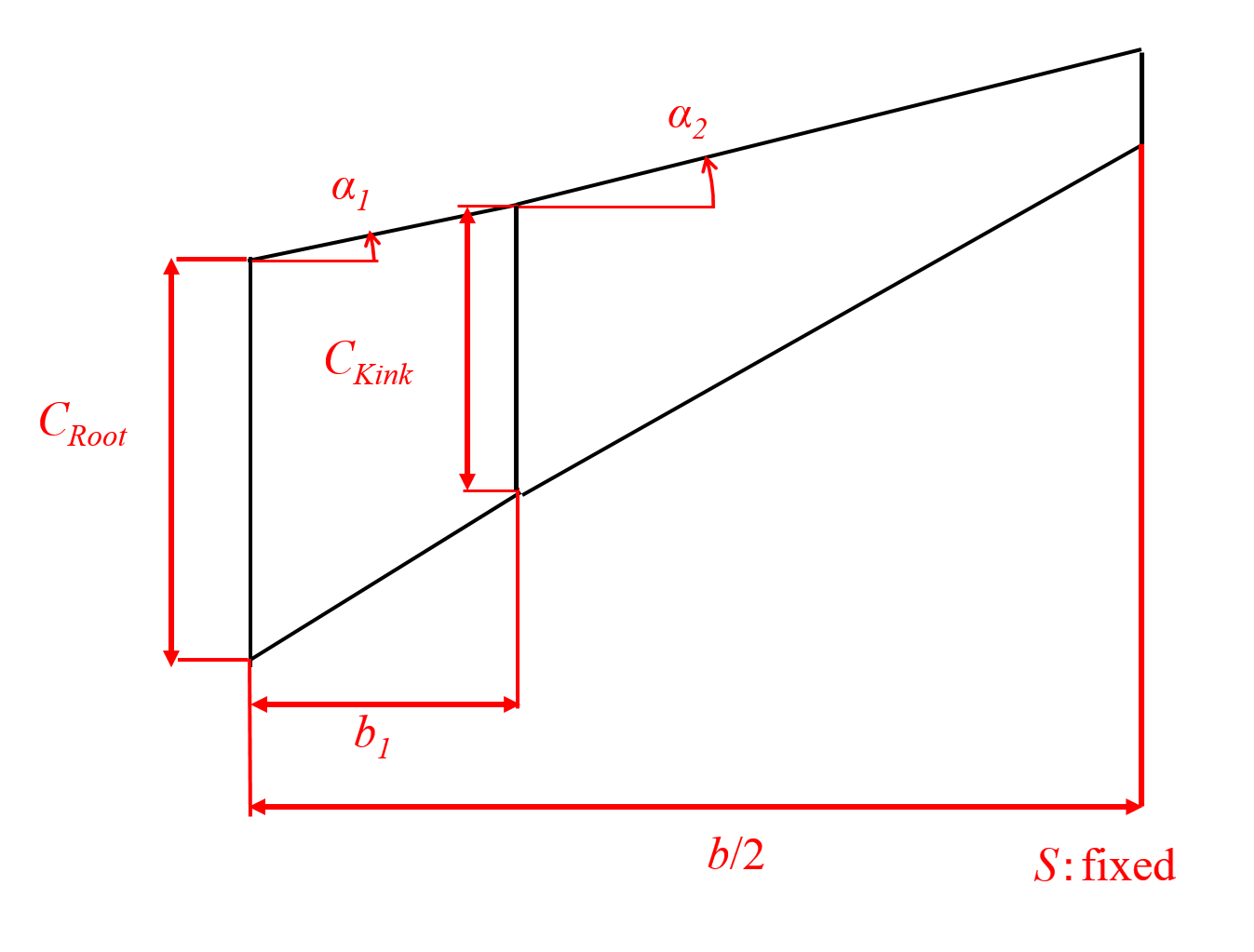Environment Conscious Aircraft Systems Research in Eco-wing Technology: Collaborative Research on Future Aircraft Conceptural Design
JAXA Supercomputer System Annual Report April 2017-March 2018
Report Number: R17EA0622
Subject Category: Aeronautical Technology
- Responsible Representative: Yoshikazu Makino, Aeronautical Technology Directorate, Next Generation Aeronautical Innovation Hub Center
- Contact Information: Seiichiro Morizawa morizawa@mech.tottori-u.ac.jp
- Members: Seiichiro Morizawa
Abstract
The discussion on the planforms of forward-swept wings for the furture aircraft design was conducted with CFD. For this purpose, a parametric study of the planforms was conducted, and the influecnes of the design parameters on the aerodynamic characteristics and the flow fields are investigated.
Reference URL
Please refer to ‘Eco-wing technology | ECAT – Environment-Conscious Aircraft Technology Program | Aeronautical Technology Directorate‘.
Reasons for using JSS2
In order to conduct the parametric study with CFD, a huge computational cost is required. It is almost impossible to have a computation by the workstation at our laboratory. So the computations with a super-computer are necessary to conduct our research because the available memory and CPU of supercomputer like JSS2 are much larger than the workstation at our laboratory.
Achievements of the Year
The planforms of the leading and trailing reversed wing of Boeing767 was employed as the base forward-swept wing. The aerodynamic characteristics and flow fields of the base wing were investigated. It is confirmed that the lift and drag slopes change at the angle of attack of 4deg. This result shows that the flow separation from the outer wing side to the inner wing side has occurred near the trailing edge. Next, the parameters of the planform are defined as shown in Fig. 2, and the aerodynamic performance of these planforms were investigated. As the result, the semispan length has better performance on the aerodynamic characteristcs when the length becomes larger. However, the changes in inner/outer swept-forward angles and chord length at the kink position of the wing contribute less to the change in the aerodynamic characteristcs. Then, the aerodynamic characteristcs becomes worse when the extreme change in outer angle and the chord length is observed.
Publications
N/A
Usage of JSS2
Computational Information
- Process Parallelization Methods: N/A
- Thread Parallelization Methods: OpenMP
- Number of Processes: 1
- Elapsed Time per Case: 660.00 minutes
Resources Used
Fraction of Usage in Total Resources*1(%): 0.02
Details
Please refer to System Configuration of JSS2 for the system configuration and major specifications of JSS2.
| System Name | Amount of Core Time(core x hours) | Fraction of Usage*2(%) |
|---|---|---|
| SORA-MA | 197,997.85 | 0.03 |
| SORA-PP | 0.00 | 0.00 |
| SORA-LM | 0.00 | 0.00 |
| SORA-TPP | 0.00 | 0.00 |
| File System Name | Storage Assigned(GiB) | Fraction of Usage*2(%) |
|---|---|---|
| /home | 162.71 | 0.11 |
| /data | 3,370.26 | 0.06 |
| /ltmp | 790.55 | 0.06 |
| Archiver Name | Storage Used(TiB) | Fraction of Usage*2(%) |
|---|---|---|
| J-SPACE | 0.01 | 0.00 |
*1: Fraction of Usage in Total Resources: Weighted average of three resource types (Computing, File System, and Archiver).
*2: Fraction of Usage:Percentage of usage relative to each resource used in one year.
JAXA Supercomputer System Annual Report April 2017-March 2018




